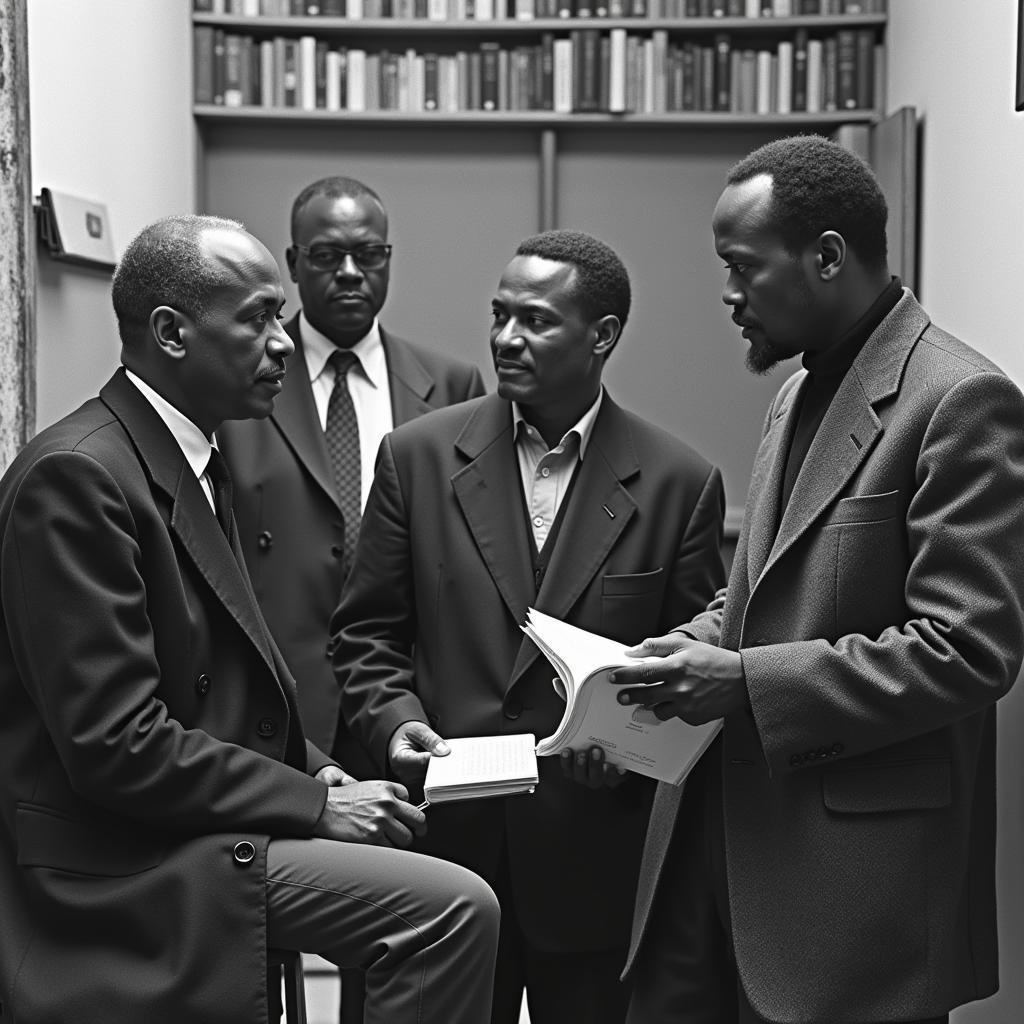African Traditional Dresses: A Journey Through Culture and Style
African Traditional Dresses are a vibrant tapestry of the continent’s rich history, diverse cultures, and artistic brilliance. More than just garments, these dresses are powerful symbols of identity, heritage, and social status, reflecting the unique stories of Africa’s many ethnic groups.
The Significance of Traditional Dress in Africa
Across the continent, traditional dresses play a vital role in various ceremonies and celebrations. Weddings, funerals, coming-of-age rituals, and harvest festivals often feature specific garments imbued with deep cultural meaning. The colors, patterns, and adornments woven into these dresses tell stories of ancestry, beliefs, and social standing.
For example, the iconic red, black, and green colors of the kente cloth, a handwoven fabric originating from Ghana, represent the bloodshed of ancestors, the resilience of the people, and the richness of the land, respectively. In East Africa, the Maasai people are known for their vibrant red shukas, which signify their warrior heritage and close connection to the land.
A Diverse Tapestry of Styles and Influences
From the flowing robes of North Africa to the intricately beaded garments of Southern Africa, the diversity of African traditional dresses is truly breathtaking. Each region boasts unique styles influenced by factors like climate, geography, available resources, and cultural exchanges with other civilizations.
- North Africa: Influenced by Arabic and Berber cultures, traditional attire in North Africa often features flowing robes like the djellaba (Morocco) and the thawb (worn throughout the region). These loose-fitting garments are well-suited for the hot, arid climate and are often beautifully embroidered or adorned with intricate patterns.
- West Africa: Known for their vibrant colors and bold patterns, West African traditional dresses include the boubou, a flowing wide-sleeved robe worn by both men and women, and the iro and buba, a two-piece ensemble consisting of a wrapper skirt and a matching blouse.
- East Africa: In East Africa, the kanga, a colorful rectangular cloth with Swahili proverbs printed on it, is a popular garment worn by women. Men often wear the kanzu, a long white or cream-colored robe, paired with a kofia, an embroidered skullcap.
- Central Africa: Traditional dresses in Central Africa are characterized by the use of vibrant fabrics like kente cloth and bogolanfini (mud cloth). The pagne, a rectangular cloth wrapped around the waist, is a common garment for both men and women.
- Southern Africa: The Ndebele people of South Africa are renowned for their intricate beadwork, which adorns their traditional dresses and jewelry. The Swazi people are known for their colorful emasi skirts, made from cowhide and decorated with intricate designs.
The Evolution of Traditional Dress
While rooted in tradition, African dresses are not static entities. They continue to evolve, reflecting contemporary fashion trends and societal changes. Today, many African designers are drawing inspiration from their cultural heritage to create modern interpretations of traditional garments, blending ancient techniques with contemporary silhouettes and fabrics.
This fusion of tradition and modernity has propelled African fashion onto the global stage, with designers like Lisa Folawiyo, David Tlale, and Thebe Magugu gaining international recognition for their innovative designs that celebrate African heritage.
Conclusion
African traditional dresses are a testament to the continent’s rich cultural heritage and artistic ingenuity. More than just garments, they are living expressions of identity, history, and storytelling. As Africa continues to evolve, so too will its traditional attire, preserving its legacy while embracing the dynamism of the present and the future.
FAQ
1. What is the most popular traditional dress in Africa?
There isn’t one single “most popular” dress, as each region boasts unique styles. However, garments like the boubou (West Africa), kente cloth (West Africa), kanga (East Africa), and shuka (East Africa) are widely recognized and celebrated.
2. Where can I buy authentic African traditional dresses?
You can find authentic dresses from various online retailers specializing in African fashion, as well as in local markets and shops during your travels to Africa.
3. Is it appropriate for non-Africans to wear traditional African dresses?
Wearing traditional attire from another culture should always be done respectfully and with an understanding of its cultural significance. It’s important to avoid cultural appropriation and to wear the garment with respect and admiration.
4. Are traditional African dresses still worn today?
Yes, traditional dresses are still worn for special occasions like weddings, funerals, and cultural festivals. They are also increasingly being incorporated into everyday wear and modern fashion designs.
5. What is the significance of the colors and patterns in African traditional dresses?
Colors and patterns often hold deep cultural and symbolic meaning. For example, red might represent power or vitality, while specific geometric patterns might denote clan or family affiliation.
Need further assistance? Contact us at:
Phone Number: +255768904061
Email: kaka.mag@gmail.com
Or visit us at:
Mbarali DC Mawindi, Kangaga, Tanzania.
Our customer service team is available 24/7 to assist you.
